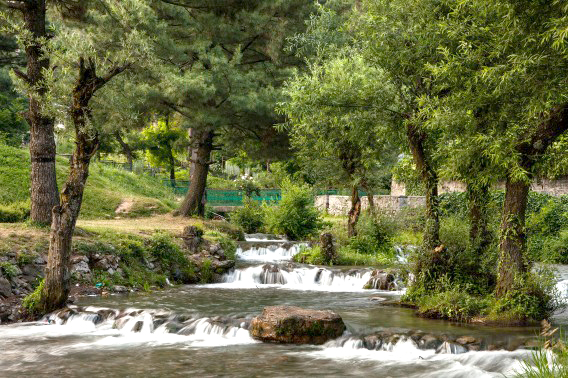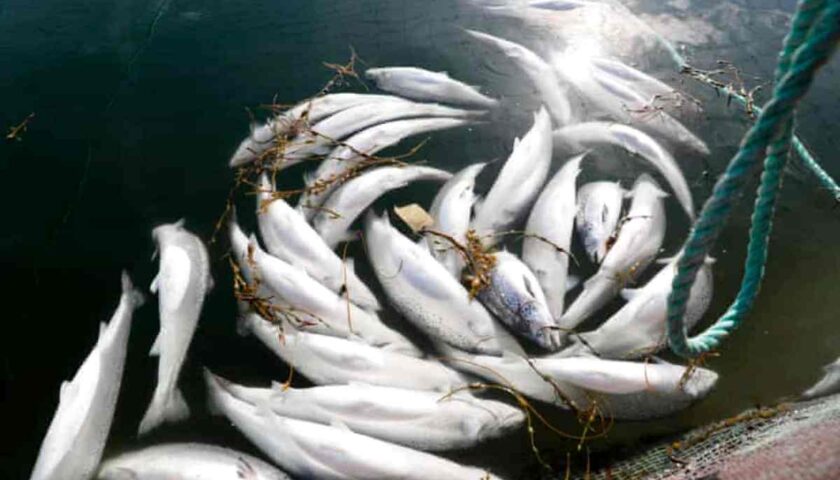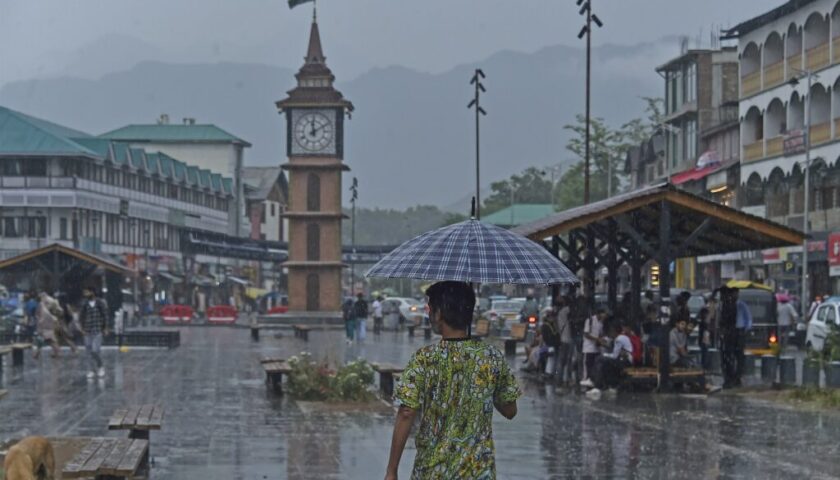After the extinction of more than three dozen fresh water springs in Pulwama’s Inder village many more including famous Indraaz Naag are dying their slow death.
 Encroachments and unwanted interference pose a threat to many freshwater springs including Indraaz Naag in Inder, a village about 6 Kilometres from Pulwama town.
Encroachments and unwanted interference pose a threat to many freshwater springs including Indraaz Naag in Inder, a village about 6 Kilometres from Pulwama town.Villagers of Inder said that around 40 springs have become extinct by way of encroachments and unwanted interference from various government agencies.
Villagers said that there were more than five dozen springs in Inder. They said that the surviving ones, around 30 in number face a threat of extinction as some vested interested farmers fill them with soil to prepare land for tilling.
“Indraaz Naag is the prestigious Spring of Inder village; others are smaller ones,” said Abdul Rashid Dar, an elder villager of Inder, adding that it was spread over 15 Kannals of land.
“The Indraaz Naag has been shrunk to a mere kannal,” he said. “There were around 70 springs in Inder. They were a source of drinking water for whole village. Their water was sweet and clean,” said another elder villager,” Addul Khaliq Wani, adding that encroachments by greedy farmers made most of them extinct.
He said that most of the springs were annexed by farmers with their land after filling them with soil.
“The land so prepared by them is being used to grow rice and apple plants,” he said.
Villagers said that even today they get drinking water from the surviving springs in the village. “Some villagers have erected tube wells in their yards for getting drinking water, others who can’t afford them continue to use spring water for drinking,” said Shakeel Ahmad Ahanghar, a youth of Inder.
Shakeel said that more than 60 percent of the villagers get drinking water from springs as water supply lines laid by the department of Public Health Engineering in the village run without water.
He said that shrinking of the springs will tiger crisis of water in the village.
“The government can harness the water to supply not only to Inder but to other villages facing drinking water scarcity,” he said.
The villagers said that the encroached springs were situated in Gas-e-charaies (State land for grazing cattle) as such no person could claim property rights over them.
They said that they approached concerned authorities many times but they turned down their pleas to save the springs from onslaught of various greedy people.
Shakeel blamed Block Development Office, Kakapora for destroying many springs in the village.
“They erected bunds within the springs which blocked the flow of water. They should have laid the bunds outside their circumference, “he said.
Among various springs that have become extinct include Bulbul Naag, Nangaar Mohalla Naag and Ganie Mohalla Nag The others which are shrinking due to encroachments include Dhobi Naag, Mir Naag, Mandar Naag, Indraaz Naag and Wani Naag.
The springs of Inder were worshipped by pandit families (Kashmiri Hindus) living in the village.
“We worship water. The spring water was pure and used for worship but we had to discontinue this practice as the springs have become filled with filth and rubbish,” said a pandit lady who wished anonymity.
Various environmental activists have expressed their concern destruction of water resources in Inder village.
“Some irrigational streams have vanished due to plugging of springs.
Few species of trout fishes have also become extinct. These changes would impact our ecology,” said Dr. Tahir, an environmentalist, adding that appropriate steps be taken to maintain these water resources.
He said that government should wake up in view of researches which predict India to become water scarce by 2025 When contacted, Assistant Commissioner of Revenue Pulwama, Sajad Qadir pleaded ignorance with the issue.
“I am unaware about this issue. I will survey the village to see the ground situation and further action would be taken accordingly,” he said.
The Block Development Officer, Kakapora, Sartaj Madni said that he has no such information and said that encroachment falls under the ambit of revenue department.
“The people should come to my office if they have any grievances, we will seek the redressal,” he said.
The springs of Inder village came to lime light after they became subject of Wahab Khaar’s poetry, one of the greatest Sufi Poets of Kashmir.
The poet has said that Indraaz Nag is the abode of King Indraaz, a djin who rules over 1200 such creatures including that one living at verinaag, Achabal, and Aripal Naag.
The villagers of Inder held the myth firmly. They said that the name of Inder is derived from Indraaz.






